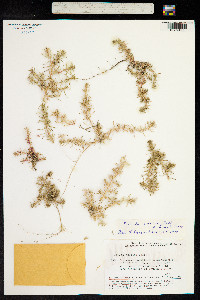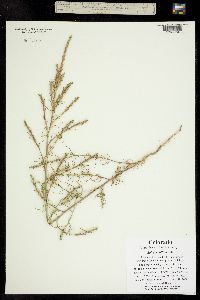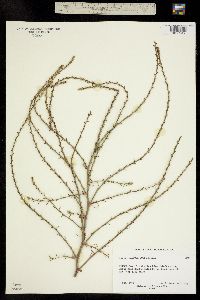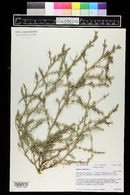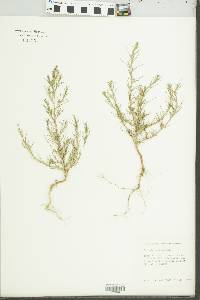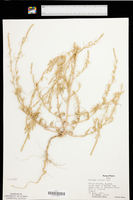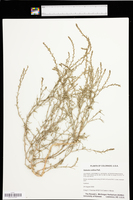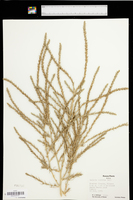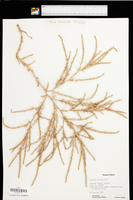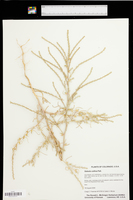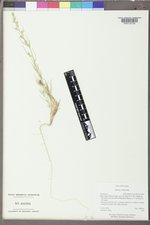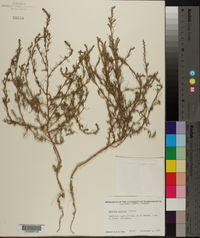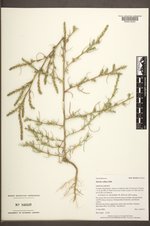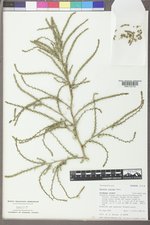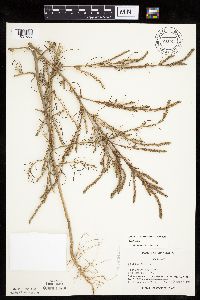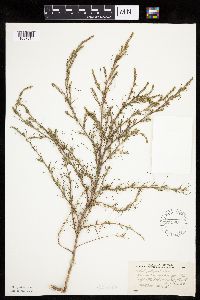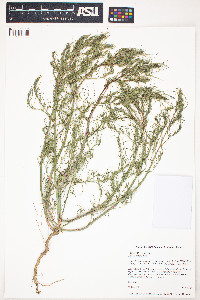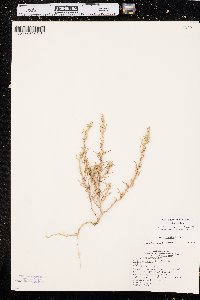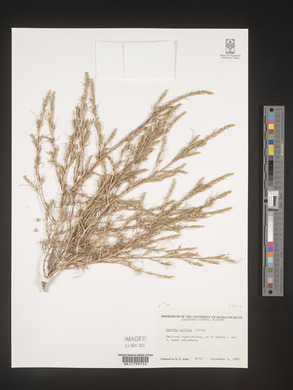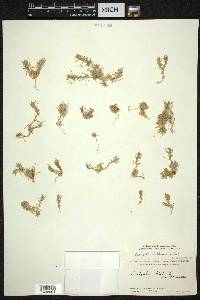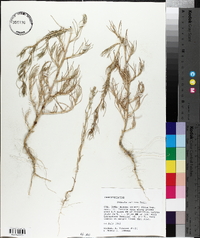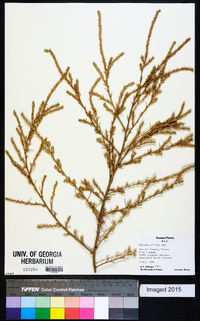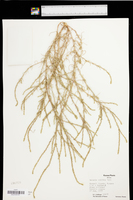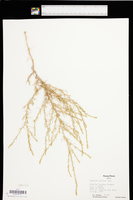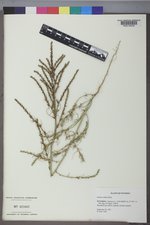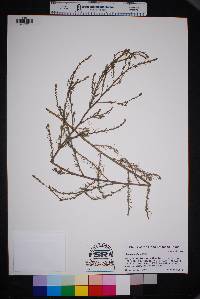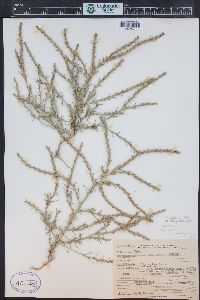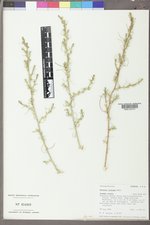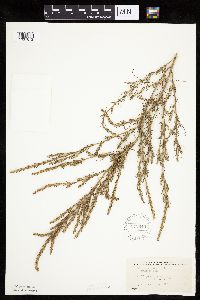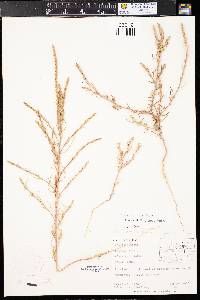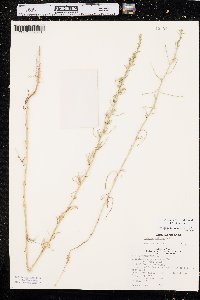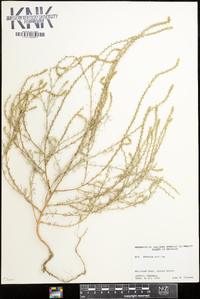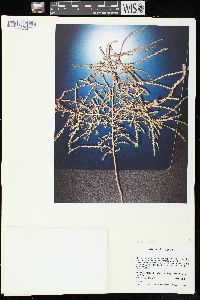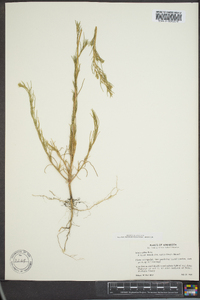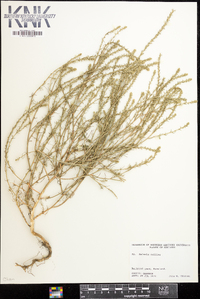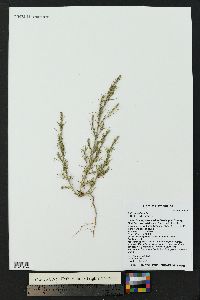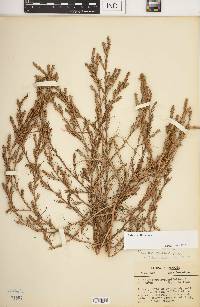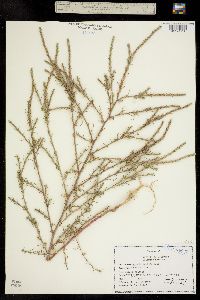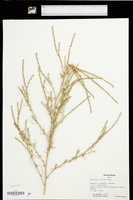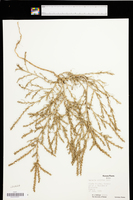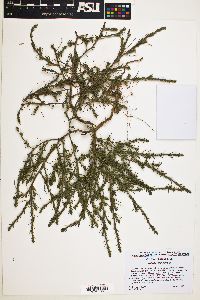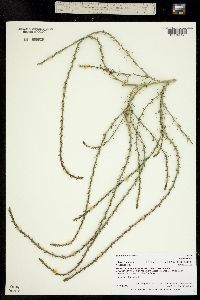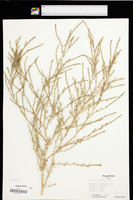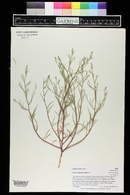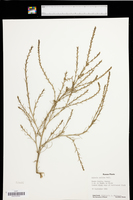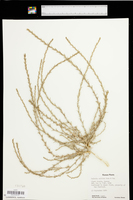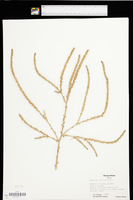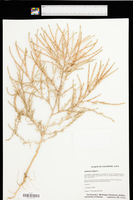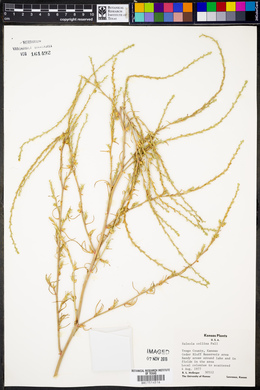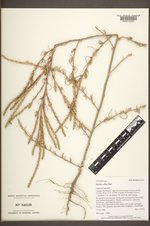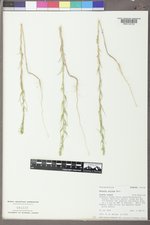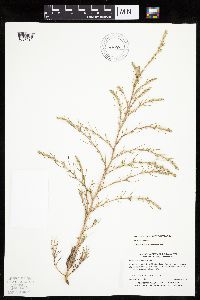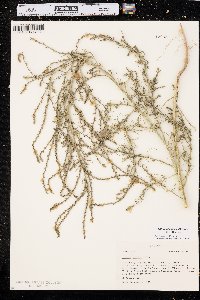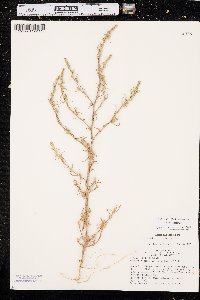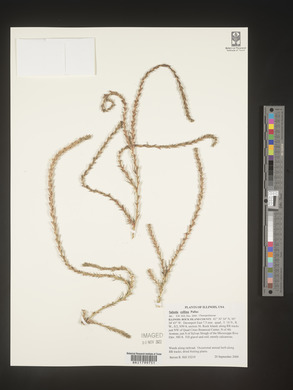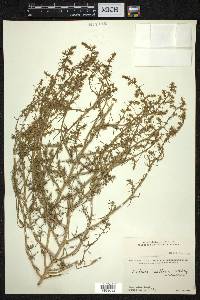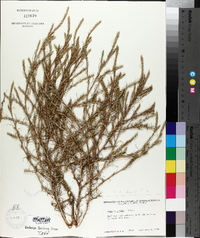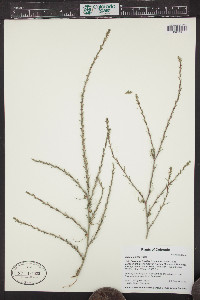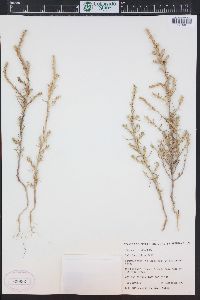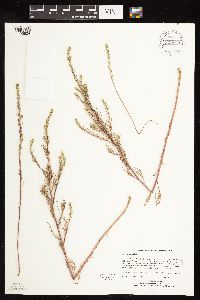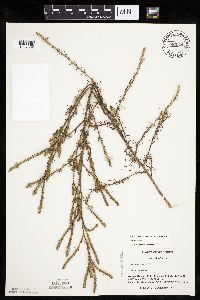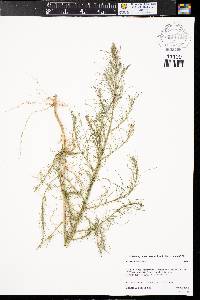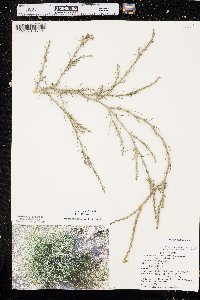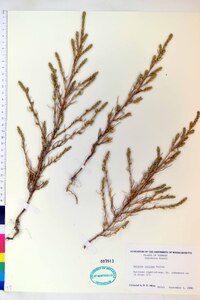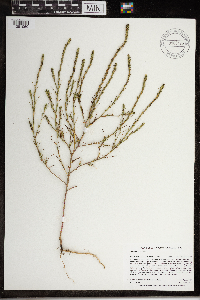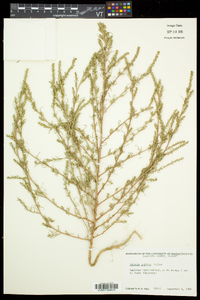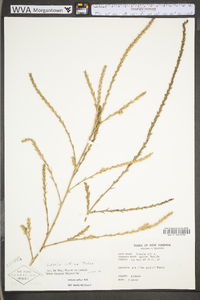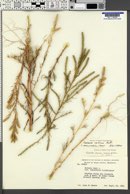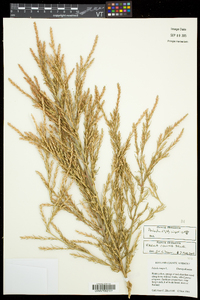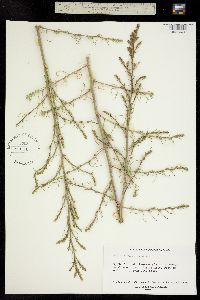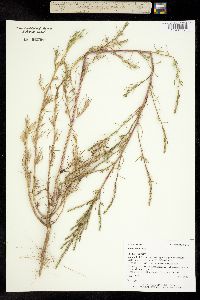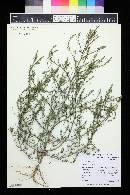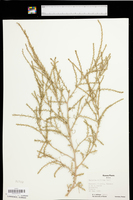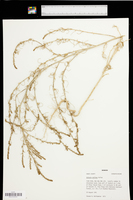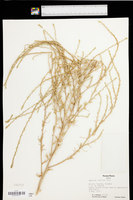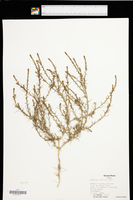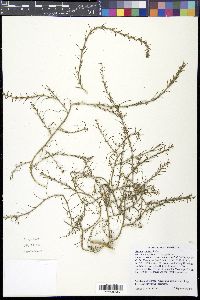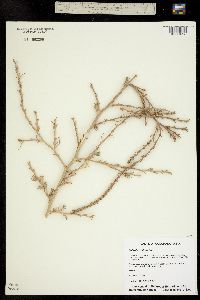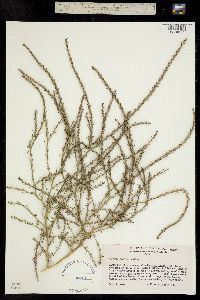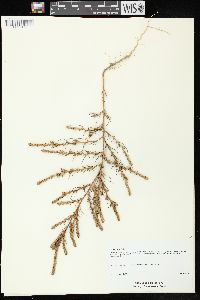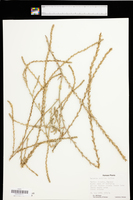
|
|
|
|
Family: Amaranthaceae
Slender Russian-Thistle
[Salsola erubescens Schrad.] |
Herbs, 10-100 cm, sparsely to densely papillose or hispid (rarely subglabrous). Stems erect, rarely ascending, branched above base (occasionally with slender branches near base); branches straight or slightly arcuate. Leaves alternate; blade filiform to narrowly linear, 1-2 mm wide, less than 1 mm wide in herbarium specimens, usually not fleshy, sometimes semi-amplexicaul at base, apex with soft bristle (rarely subspinescent). Inflorescences not interrupted, dense, 1-flowered (rarely 2-3-flowered), often also in axils of proximal leaves and branches, lower ones tightly enclosed in bracts and bracteoles, forming gall-like caducous balls at maturity; bracts alternate, strongly imbricate and appressed at maturity, base not distinctly swollen, apex acuminate into subulate spine. Flowers: bracteoles becoming connate basally and adnate to perianth segments; perianth segments wingless or with narrow, erose wing at maturity, apex acute, weak and flaccid, glabrous; fruiting perianth ca. 2-5 mm diam. 2n = 18. Fruiting summer-fall. Waste places, roadsides, railway areas, cultivated fields, disturbed natural and seminatural plant communities; 100-2000 m; introduced; Ont., Sask.; Ariz., Colo., Iowa, Kans., Ky., Mich., Minn., Mo., Mont., Nebr., N.H., N.Mex., N.Y., N.Dak., Okla., S.Dak., Utah, Vt.; Eurasia. Salsola collina was reported for the first time for North America from Minnesota by J. W. Moore (1938). It was collected in Kansas in 1923 (R. E. Brooks et al. 1976), but misidentified. Later it was discovered in Colorado, Iowa, and Missouri (V. L. Cory 1948; W. Schapaugh 1958; V. Muhlenbach 1979). Reports of S. collina for Arizona and New York are based on specimens cited by S. Rilke (1999). Its actual distribution seems to be underestimated due to the common and constant confusion with deviant forms of S. tragus. In the future, S. collina may be expected to occur within the major portion of the present range of S. tragus.
Young plants with a strong, erect, monopodial stem, later becoming more bushy-branched; leaves somewhat dilated at the base; bracts ±appressed, imbricate, short, almost subulate, exceeding the bracteoles; sep often connate with the bracteoles, wingless or with a small, erose wing; embryo annular; 2n=18, otherwise much like S. tragus. Native of Siberia, well established as a weed on the Great Plains, and e. occasionally to Minn., Io., Ill., and even Vt. Gleason, Henry A. & Cronquist, Arthur J. 1991. Manual of vascular plants of northeastern United States and adjacent Canada. lxxv + 910 pp. ©The New York Botanical Garden. All rights reserved. Used by permission. From Flora of Indiana (1940) by Charles C. Deam Indiana Coefficient of Conservatism: C = null, non-native Wetland Indicator Status: N/A Diagnostic Traits: leaves alternate, terete, tipped by a small spine (less than 0.5 mm long); flowers sessile in axiles of fleshy bracts, arranged in a dense spike; calyx broadly winged in fruit. |
This project was made possible in part by the Institute of Museum and Library Services [MG-70-19-0057-19].
Powered by Symbiota

